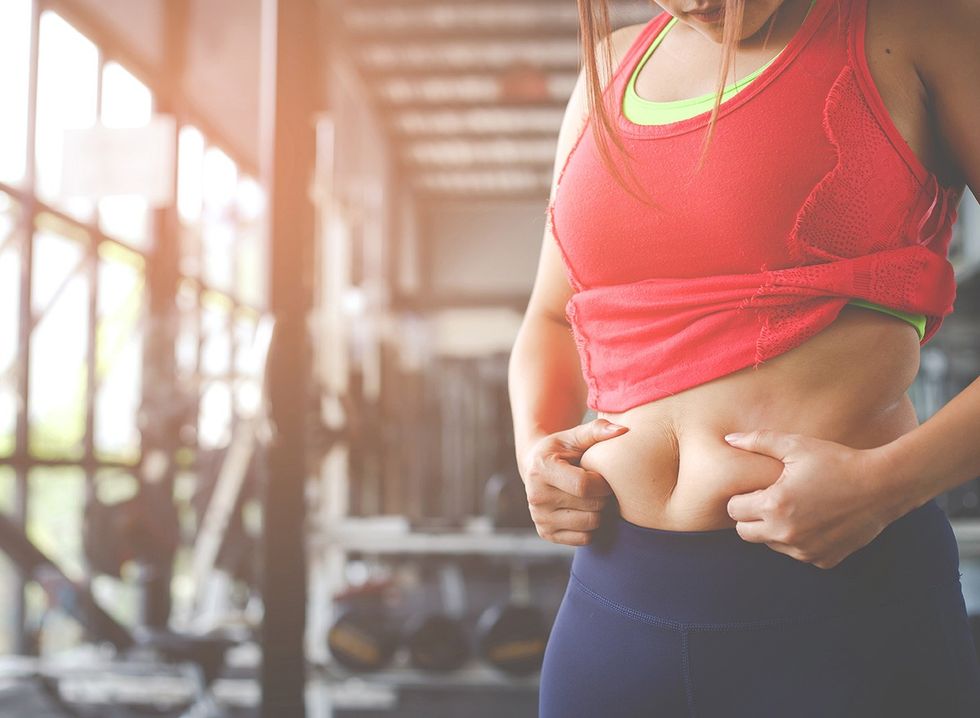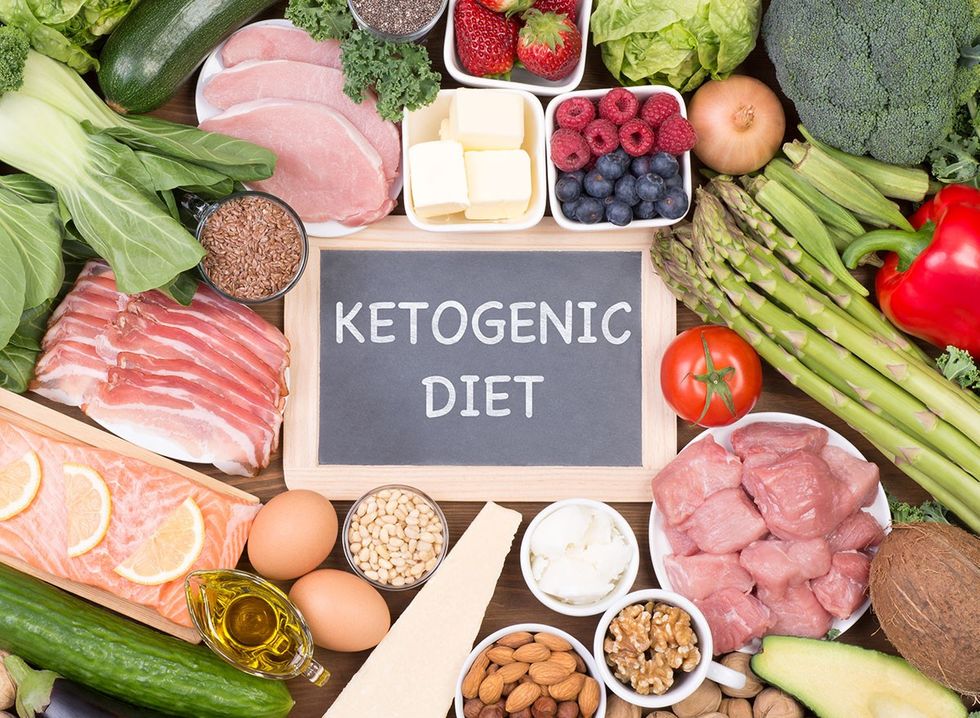Ever feel like you're doing everything right with your diet, but your body isn't responding anymore? You're not alone. While counting calories seems straightforward, your body might be secretly fighting against your weight loss efforts. Thomas DeLauer, a nutrition coach for professional athletes with over 3.68 million YouTube subscribers, reveals the critical warning signs that your body has stopped burning fat effectively. Learn how to identify these signals and, more importantly, how to fix them.
Persistent Cold Sensitivity
If you're constantly reaching for extra layers, your diet might be the culprit. "If you restrict your calories right now, I don't think you'll start feeling cold tomorrow or the next day or even next week, but over a period of time, weeks, months, years, you might certainly start noticing a reduction in your body temperature," DeLauer warns in his post. Research from the Journal of Aging confirms significantly lower body temperatures in people following caloric restriction.
Thyroid Function Changes
DeLauer points to compelling research from the Journal of Endocrinology and Metabolism about thyroid impact. "I don't want to scare you and make you think that if you restrict calories, you're going to plummet your T3 levels. First of all, your T3 levels will come back. The thyroid is very resilient," he explains. However, long-term caloric restriction can lead to decreased T3 hormone levels, affecting your metabolism.
Strength Starts Declining
"I'm not talking about just general fatigue," DeLauer clarifies. "That can definitely happen with caloric restriction, but I'm talking more about actually feeling like you have less strength." He cites research showing a concerning 12.4% reduction in strength during weight loss. The good news? This can be mitigated by maintaining adequate protein intake during caloric restriction.
Sleep Quality Deteriorates
"If you start noticing that your sleep is going to garbage, this is a very good indicator that you're eating too little, and this can happen very fast," DeLauer warns. "This can be something that can happen as quickly as two or three days into extreme caloric restriction." Research involving 4,400 people revealed that consuming less than 16% of calories from protein led to worse sleep quality and difficulty falling asleep.
Energy Levels Plummet
"When you first restrict calories, you feel really good, you're reducing inflammation, you get more energy, you actually feel more alive and more energetic, and that lasts for a couple of months sometimes," DeLauer explains. "But then unfortunately, what ends up happening after that is that you end up in a situation where your body has to go into preservation mode."
Your Body Enters Power-Save Mode
DeLauer uses a brilliant analogy: "It's like when your iPhone gets below 20% and it goes to the yellow battery bar and it kind of downregulates the performance to preserve battery life. That's kind of what happens with your body." This power-saving mode affects everything from your workouts to your daily activities.
RELATED:10 Protein Mistakes Keeping Your Body Fat High, Top Coach Says
Mood Changes Become Noticeable
"It's almost like you have a more cynical outlook on life," DeLauer notes. "This isn't like short-term hanger. This is more long-term mood disorders that end up happening as a result of being in caloric restriction mode." The Journal of Health Psychology confirms this connection between dietary restriction and increased irritability.
Anxiety Levels Rise
"Our ability to withstand and our resilience to be able to deal with caloric restriction goes down as we age," DeLauer explains. He references a 2022 study showing how caloric restriction can increase anxiety, particularly in older individuals. This effect becomes more pronounced with age, making proper nutrition even more crucial.
RELATED:She Walked 30,000 Steps for a Week and Discovered Something Unexpected
Exercise Performance Suffers
"You are making this problem even worse because if you're not eating enough protein at baseline and then you're adding exercise on top of it, you're definitely not getting enough protein," DeLauer emphasizes. This creates a harmful cycle where inadequate nutrition compromises both performance and recovery.
Recovery Time Increases
DeLauer stresses that recovery becomes compromised when calories are too low. He explains that increased protein demands from exercise, combined with insufficient caloric intake, can significantly impair your body's ability to repair and rebuild after workouts.
Stress Hormones Spike
"You have increases in adrenaline, in cortisol, in epinephrine, and that will definitely impact your sleep," DeLauer notes. These hormonal changes don't just affect sleep – they can impact everything from mood to fat storage, especially in older adults who are more sensitive to hormonal fluctuations.
RELATED:7 “Game-Changing” Steps That Got This Trainer Stronger at 43 Than at 32
Metabolic Flexibility Diminishes
The solution isn't to abandon your weight loss goals, but to approach them strategically. DeLauer advises, "Don't go back to eating in a surplus and don't go back to eating how much you were eating at your heavier weight. Just slightly increase your calories and try to maintain your weight for two to three weeks, and then go back into caloric restriction, and you'll find that that really recharges you quite well." And if you enjoyed this article, take advantage of these 15 Quick Ways to Lose Body Fat Percentage in a Week.

















 Shutterstock
Shutterstock Shutterstock
Shutterstock


 Shutterstock
Shutterstock

 Shutterstock
Shutterstock Shutterstock
Shutterstock Shutterstock
Shutterstock


 Shutterstock
Shutterstock Shutterstock
Shutterstock Shutterstock
Shutterstock Shutterstock
Shutterstock

 I'm a Nutritionist and These 9 High-Protein Snacks Keep My Clients Full While Losing 50 Pounds
I'm a Nutritionist and These 9 High-Protein Snacks Keep My Clients Full While Losing 50 Pounds
 Shutterstock
Shutterstock 2. Processed FoodsShutterstock
2. Processed FoodsShutterstock Shutterstock
Shutterstock Shutterstock/Prostock-studio
Shutterstock/Prostock-studio Shutterstock
Shutterstock Pro TipsShutterstock
Pro TipsShutterstock Shutterstock
Shutterstock Shutterstock
Shutterstock Shutterstock
Shutterstock Shutterstock
Shutterstock Don’t Drink as Much AlcoholShutterstock
Don’t Drink as Much AlcoholShutterstock Most Women on GLP-1s Are Making a Few Common MistakesShutterstock
Most Women on GLP-1s Are Making a Few Common MistakesShutterstock Soda and Sugary DrinksShutterstock
Soda and Sugary DrinksShutterstock Shutterstock
Shutterstock Eat BreakfastShutterstock
Eat BreakfastShutterstock And Improve Insulin SensitivityShutterstock
And Improve Insulin SensitivityShutterstock Belly Flab Strip Tip: Sugar and Fat Calories Leave Its Mark on Your BodyShutterstock
Belly Flab Strip Tip: Sugar and Fat Calories Leave Its Mark on Your BodyShutterstock Shutterstock
Shutterstock The Drugs Mimic the GLP-1 Hormone Naturally Produced by the BodyShutterstock
The Drugs Mimic the GLP-1 Hormone Naturally Produced by the BodyShutterstock 3. Deep-Fried ItemsShutterstock
3. Deep-Fried ItemsShutterstock